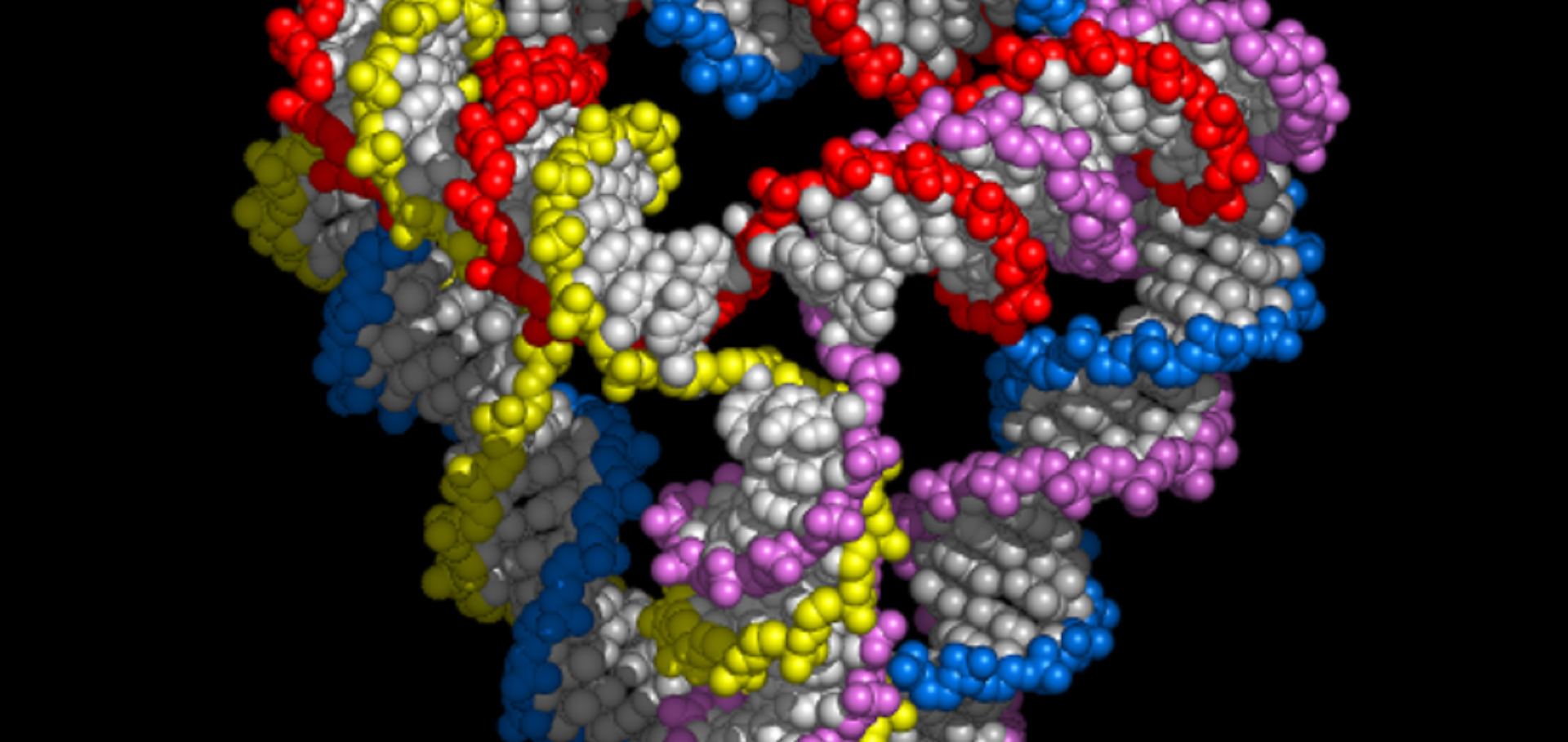Modelling DNA origami self-assembly at the domain level
Journal of Chemical Physics American Institute of Physics 143:16 (2015) 165102
Abstract:
We present a modelling framework, and basic model parameterization, for the study of DNA origami folding at the level of DNA domains. Our approach is explicitly kinetic and does not assume a specific folding pathway. The binding of each staple is associated with a free-energy change that depends on staple sequence, the possibility of coaxial stacking with neighbouring domains, and the entropic cost of constraining the scaffold by inserting staple crossovers. A rigorous thermodynamic model is difficult to implement as a result of the complex, multiply connected geometry of the scaffold: we present a solution to this problem for planar origami. Coaxial stacking of helices and entropic terms, particularly when loop closure exponents are taken to be larger than those for ideal chains, introduce interactions between staples. These cooperative interactions lead to the prediction of sharp assembly transitions with notable hysteresis that are consistent with experimental observations. We show that the model reproduces the experimentally observed consequences of reducing staple concentration, accelerated cooling, and absent staples. We also present a simpler methodology that gives consistent results and can be used to study a wider range of systems including non-planar origami.Guiding the folding pathway of DNA origami
Nature Springer Nature 525:7567 (2015) 82-86
DNA walker circuits: computational potential, design, and verification
Natural Computing 14:2 (2015) 195-211
Abstract:
Unlike their traditional, silicon counterparts, DNA computers have natural interfaces with both chemical and biological systems. These can be used for a number of applications, including the precise arrangement of matter at the nanoscale and the creation of smart biosensors. Like silicon circuits, DNA strand displacement systems (DSD) can evaluate non-trivial functions. However, these systems can be slow and are susceptible to errors. It has been suggested that localised hybridization reactions could overcome some of these challenges. Localised reactions occur in DNA ‘walker’ systems which were recently shown to be capable of navigating a programmable track tethered to an origami tile. We investigate the computational potential of these systems for evaluating Boolean functions and forming composable circuits. We find that systems of multiple walkers have severely limited potential for parallel circuit evaluation. DNA walkers, like DSDs, are also susceptible to errors. We develop a discrete stochastic model of DNA walker ‘circuits’ based on experimental data, and demonstrate the merit of using probabilistic model checking techniques to analyse their reliability, performance and correctness. This analysis aids in the design of reliable and efficient DNA walker circuits.DNA walker circuits: computational potential, design, and verification
Natural Computing Springer Nature 14:2 (2015) 195-211
Automated design and verification of localized DNA computation circuits
DNA 2015: DNA Computing and Molecular Programming Springer International Publishing Switzerland 9211 (2015) 168-180


